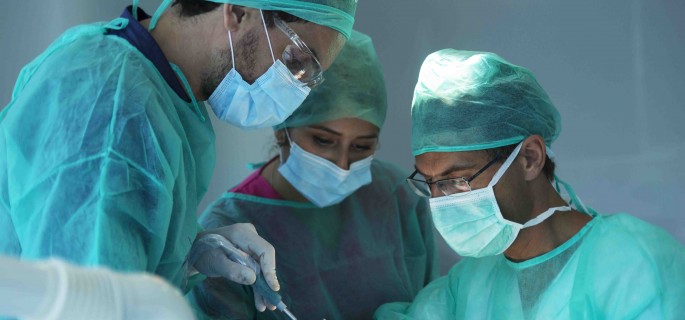An alternative in the Canaries to bone regeneration of animal origin in the dental surgery
The Artedental clinic was the first in the Canary Islands and one of the first in Spain in converting the tooth extracted from the patient into biomaterial for bone regeneration, achieving the absolute biocompatibility and integration with the recipient bone.
The latest report of the World Health Organisation (WHO) which designated processed meat as a carcinogenic risk stirred consciences throughout the globe about the management of today’s animal industry. Numerous reflections and studies have become popular following this announcement.
More and more companies are trying to make responsible and sustainable use of their raw material not only because of environmental concerns but because of the way they animals are raised, fed and killed, in addition to the energy needed for this.
Dental surgery is not exempt from the use of materials of animal origin. In the case of bone regeneration, one of the most used components is the bovine bone graft.
There are two types of elements in the substitution of bone: xenogeneic (coming partly from humans or animals) and synthetic
The grafts can come from the individual himself (autograft), from other individuals (allografts), from different animal species (xenografts) or crystalline ceramics (alloplastic).
The so-called Gold-Standard, being the most suitable, is the autologous, ie that which comes from the patient’s own body. This is because it is biocompatible: it does not produce an immunological reaction.
The first dental clinic in the Canary Islands and one of the first in Spain to use autologous material, ie the patient’s own tooth, was Artedental, located in Puerto de la Cruz.
Víctor Cubillo, oral surgeon and medical director of the centre, says they make full use of the autologous graft.
“We use not only the patient’s bone but the tooth that is extracted too,” he explains. “We combine this with a concentration of cells and growth factors we obtain by centrifuging the patient’s blood and used in the form of membrane tans as liquid. “
This ensures that biocom-patibility and integration with the recipient bone is absolute.
The technique to convert the tooth into autologous biomaterial consists of crushing and disinfecting the dentin, the fabric which makes up most of the tooth, and then separating it into grains of different sizes, free of bacteria and organic tissues.
The resulting material, after the necessary time, is a mixture of bone and dentin bound by ankylosis (the fixation of a tooth to bone), just as it occurs in the body naturally. It has physical properties, hardness and stability that can become superior to those of the recipient bone.
Therefore, what could be better than using material originating from the patient so that there is no adverse reactions and is better suited to the body and in addition contributing to the use of responsible and sustainable elements?



